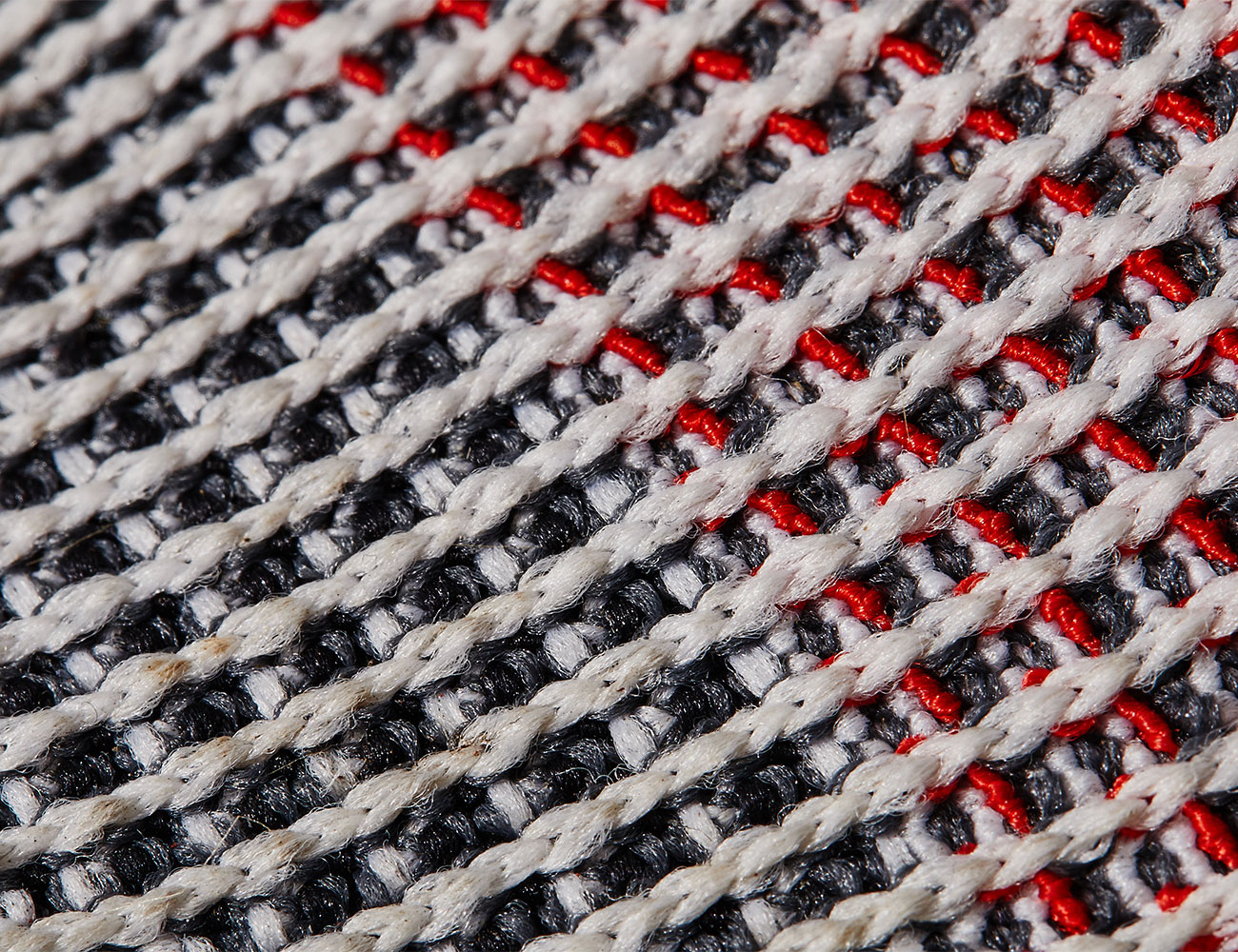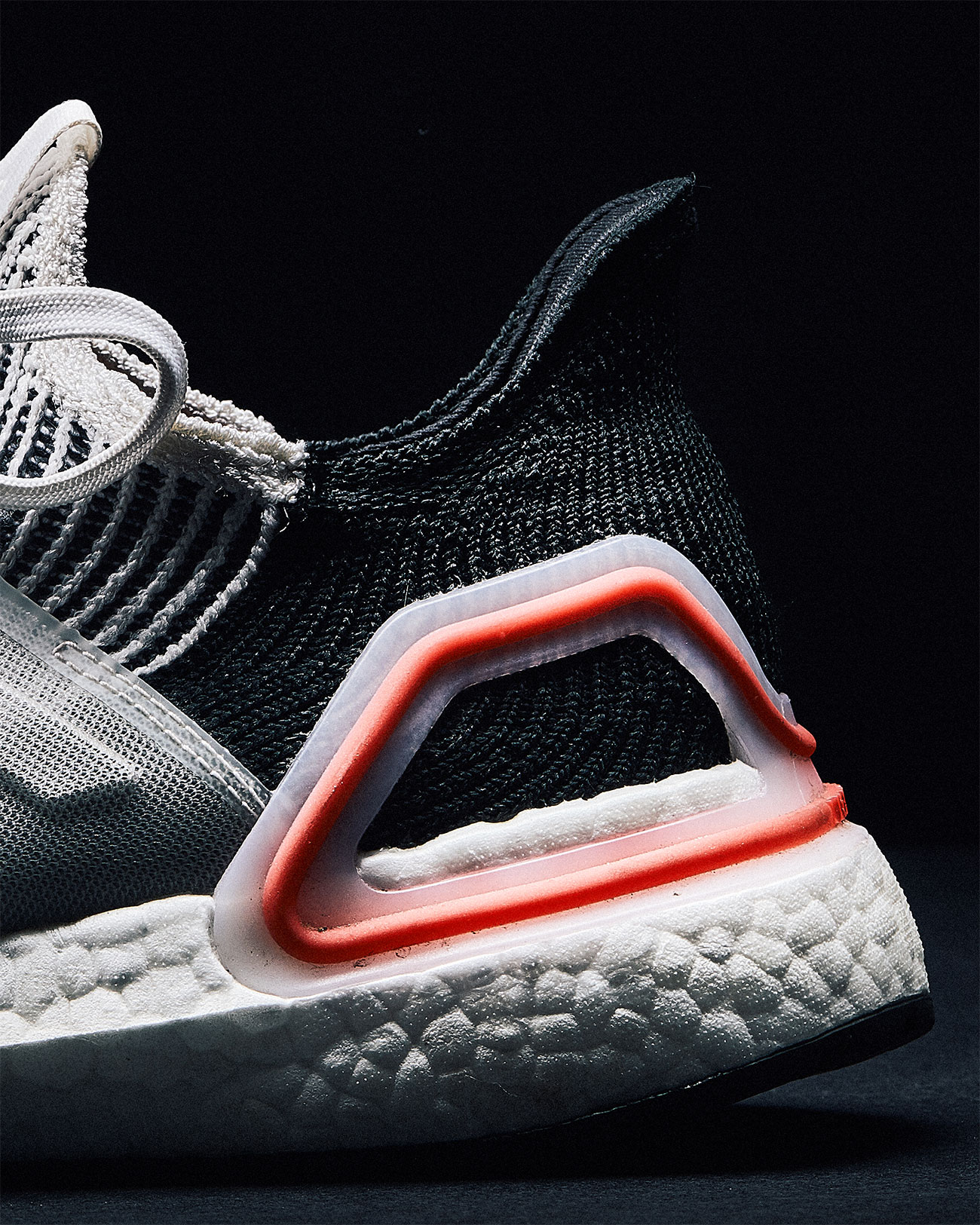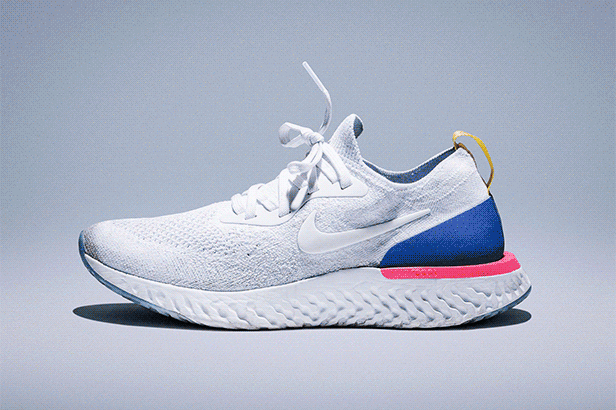Adidas updated its best-selling running shoe, the Ultraboost, with the 19th version, which first launched back in early December. It quickly sold out and then re-released in late February in a handful of new colors. The sneaker has a cult-like following — so much so that the brand brought back the original colorway (from 2015) also in late December, which quickly sold out, too. But how does number 19 compare to its previous iterations? I’ve been running in the Ultraboost 19 since late December. It’s a shoe for neutral runners or people who just want a sneaker they can wear all day long. While I enjoyed running in the original Ultraboost, the 19 earned its spot in my rotation of shoes for my upcoming race season thanks to its ability to work for both long runs and speed runs.
The Good: The Adidas team rebuilt the Ultraboost 19 from the ground up with just 17 individual new parts — typically it takes more than 30 to make one running shoe. There’s the updated Boost foam (which is apparently 20 percent bouncier and more energy-returning than the original), a visible 3D heel frame (the bright red pentagon that’s visible on the heel) that’s flexible yet supportive, and a torsion spring (the connector between your forefoot and heel that lets them each move independently without too much flexing and straining) underfoot to help with snappier turnover. The Primeknit upper gets a stretch upgrade that’s Goldilocks-approved — not too soft and not too firm. You’ll find the same Continental rubber outsole that’s grippy over snow and ice, both on the road and on the track. Despite all the changes, the shoe is the same price as the original. The original Ultraboost didn’t have as much Boost foam, so each footfall wasn’t as soft as it is in the Ultraboost 19. The original also had a more structured upper with not as much stretch and less breathability.
Who It’s For: The Adidas Ultraboost is for committed fans who want the latest upgrade as well as neutral runners who enjoy having enough room for splay their toes. During training, I logged upwards of 30 miles in the shoe, and it felt light and bouncy from the first mile to the last. It’s also great for casual runners and people who want to wear a good-looking sneaker all day long.

Watch Out For: I’m a neutral runner, meaning I don’t need too much support to keep my feet from over or under pronating, but on one of my long runs, my left arch started to nag me while wearing this shoe. I cranked down on the laces, which pulled the mesh-like saddle tighter and got me through the end. However, if you need a lot of arch support, this is not the shoe for you. If you hate the colorway (laser red looks too similar to pink, in my opinion), wait for darker colors this spring.
The shoe is also 10.9 ounces (for a size 9) which is middle of the road for neutral runners but will be too heavy for someone who is used to training in shoes typically built for track days. For reference, in Best New Sneakers in 2018, we picked shoes in these optimal ranges: 6.4 to 7.2 ounces for speed days, 7.5 to 10.8 ounces for easy runs and 8 to 12 ounces for long runs. Also, at $180, these shoes aren’t cheap.
Alternatives: In comparison to the Ultraboost 19, the previous iteration has a thicker upper, which provides more support for someone who needs stability to keep their feet from rolling in or out. If you like feeling like your feet are locked in, then the previous version is best for you (and it helps that it goes on sale frequently), and the Solarboost, (which we’re also fans of) has a much thicker ready-to-race-looking upper ($160). During testing, I alternated with the Nike Odyssey Shield ($130), to keep my feet feeling fresh, prevent injuries and to keep them dry in wet weather, and found the Nikes to be softer, but as peppy in bounce. While the Ultraboost 19 are similar in weight to the New Balance 1080s at 10.4 ounces ($150), the foam and lightweight-feel reminded me more of the New Balance Fresh Foam Beacon ($120). If the Ultraboosts are too expensive or you don’t like how the upper feels, the Beacon is a similar maverick that works for both long, steady runs and for speedwork.
Review: From the first time I pulled them on to my final eight-mile wrap-up run, I had no issues with hot spots and blisters. The white upper dirtied throughout testing, but nothing that wasn’t to be expected. Visually, the shoes look different from the original Ultraboost shoe: The full Primeknit upper (Adidas’s proprietary stretchy material that holds your feet in place) has red and black threads woven in to serve as a visual and physical representation of where there’s a bit more give in the shoe. Right under your toes, the red fibers provide much-needed stretch, while your toes are surrounded with black threads locking them in place. The mesh-like saddle is white but translucent enough that you can make out the Primeknit fabric just below it. Similar to the Uncaged version of Ultraboost, the saddle is barely attached, meaning there’s a lot of flex and movement around the arch of your foot. With just four eyelets, it can be tricky to tighten the laces to find a truly locked-in feeling around your midfoot.
With the original Ultraboosts, testers recommend that buyers go half a size up, and the same still remains true here. I typically run in a 7.5 and found the 8 didn’t cause my feet to slide around, plus allowed for plenty of space if my feet swelled during a run.

When comparing with the original Ultraboosts, the midsole has 20 percent more Boost foam without adding a ton of weight. Boost caught on with runners due to its energy-returning properties, which affects how your feet (and calves and body) feel after running. With each step, energy transfers from your feet into the ground. While we wear sneakers to dampen the force of the impact, you don’t want to feel dead after running a mile because there was no support (read: foam) underfoot to rebound some of that energy back into your body. For me, I found that even during long runs, the shoes felt springy and helped propel me forward.
Verdict: These shoes worked for everything from easy five-mile jogs to longer training runs to 4 x 1200 followed by a 4 x 400-meter track workout. Overall, these shoes are insanely comfortable, breathable and supportive. While these likely aren’t the shoes I’m going to pull on before I hit the starting line at the upcoming United Half Marathon since I want to have a speedy run and need something lighter for 13.1 miles, I will keep these in my arsenal for easy days and long runs.
What Others Are Saying:
• “Easy runs were a treat; every step was met with soft cushioning and smooth strides. I picked up the pace on a speed day that went like this: 2-mile warm up, 6x 5 min @ 6:58 pace with 4 min recovery between intervals, and finally a 2-mile cool down for a total of 10 miles. I was able to hold the pace without feeling the extra weight of the shoe. Finally, this morning I took these beauties out for 15 miles and finished with my tired legs feeling not too beat up. I would typically never do speed work in a shoe that I consider a daily trainer. ” — Thomas Neuberger, Believe in the Run
• “This shoe has multiple personality disorder. At 11.6 ounces [for size 10.5] it’s not a lightweight uptempo shoe, but that’s where it feels best. I wore the shoe on multiple long runs, multiple easy runs, and one session of hill repeats, and they felt the best when I was running up a hill at 90% effort. It doesn’t make sense, but the bouncy nature of the shoe lends itself to pushing pace. Many of my easy runs ended with strides, and again the shoe felt smoothest at a faster pace. That isn’t to say it isn’t smooth during slow miles, it very much is, but it just feels better faster.” — Jeff Beck, Road Trail Run
Key Specs
Weight: 10.9 oz
Drop: 10 mm
Upper: Primeknit 360
Adidas provided this product for review.

Hot takes and in-depth reviews on noteworthy, relevant and interesting products. Read the Story



